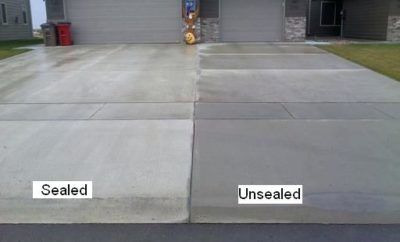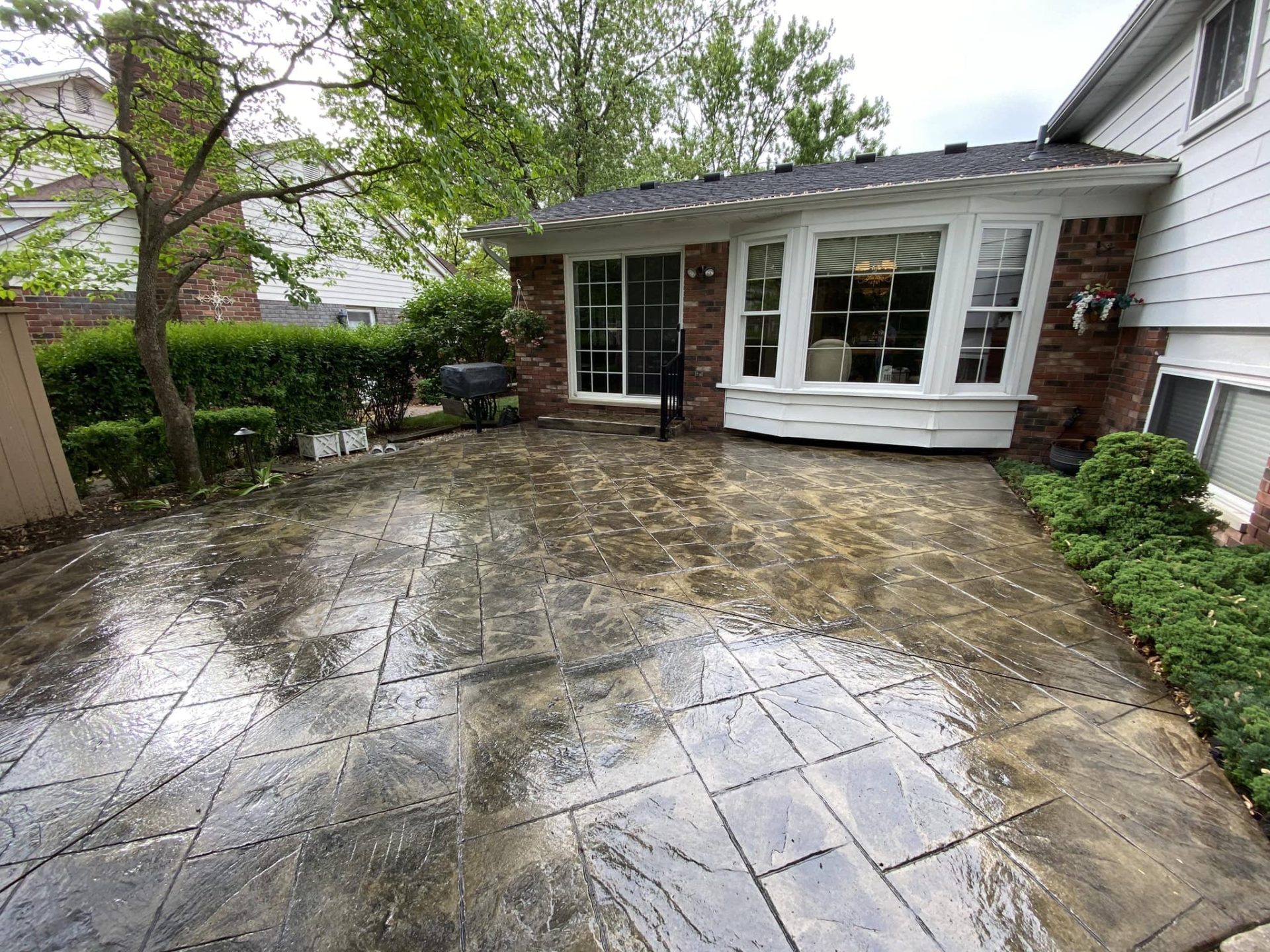Discover Premier Concrete Sealing Near Me
Wiki Article
The Ultimate Guide to Concrete Sealing: Boost Longevity and Protection
Concrete is a durable and extensively utilized material, yet it is not invulnerable to the components. With time, direct exposure to wetness, UV rays, and different pollutants can create concrete to deteriorate, endangering its architectural stability and appearance. That's where concrete securing comes in. By applying a premium sealant, you can dramatically boost the longevity and defense of your concrete surfaces. But exactly how specifically does concrete securing job? What are the steps included? And which kind of sealant should you pick? In this best guide, we will dig right into all these inquiries and even more, supplying you with useful ideas and important insights to help you make educated decisions and make sure the durable efficiency of your concrete.Relevance of Concrete Sealing
Concrete securing is an important action in making sure the longevity and security of concrete frameworks. As concrete is a porous material, it is at risk to damages brought on by water, chemicals, and other external factors. By using a high-quality sealer, the concrete's pores are filled up, creating a protective obstacle that avoids the penetration of damaging substances. This obstacle not only boosts the sturdiness of the concrete but also helps to preserve its aesthetic charm.One of the main advantages of concrete sealing is the prevention of dampness intrusion. Moisture can permeate right into concrete, triggering it to break, spall, or damage with time - concrete sealing near me. Sealing the concrete protects against water from getting in the surface area, lowering the threat of damage and expanding its life-span. In addition, securing also safeguards versus the invasion of chemicals, such as oil, oil, and salts, which can tarnish or wear away the concrete.

Steps to Prepare Your Concrete Surface Area
To make certain optimal outcomes when sealing concrete, proper preparation of the surface is important. Before you start the sealing procedure, it is essential to completely clean the concrete surface area.After cleansing the surface area, it is critical to fix any kind of cracks or damages. Fill out the splits with a concrete fracture filler to avoid water infiltration and additional degeneration. For bigger splits or craters, utilize a patching substance to recover the honesty of the concrete.
When the surface is tidy and fixed, it is suggested to engrave the concrete. Engraving produces a rougher appearance, enabling the sealer to permeate far better and stick properly. You can make use of an etching option or a mechanical etching tool to accomplish the preferred structure.
After etching, it is important to thoroughly rinse the surface and permit it to dry entirely. Moisture can impact the sealer's performance and bond, so ensuring the concrete is dry is essential.
Various Types of Concrete Sealers
There are numerous sorts of sealants readily available for improving the durability and defense of concrete surface areas. These sealants can be extensively identified into two categories: permeating sealers and topical sealants.Penetrating sealers, likewise called fertilizing sealants, work by penetrating the concrete surface and chemically responding review with the minerals to develop a safety barrier. They do not modify the appearance of the concrete and give durable defense versus wetness, spots, and freeze-thaw damages. Examples of permeating sealers consist of silane, siloxane, and lithium-based sealers.
On the other hand, topical sealers form a safety layer on the surface of the concrete. helpful resources They come in numerous surfaces, such as matte, satin, or high gloss, and can enhance the look of the concrete by including deepness and luster.
It is essential to choose the ideal sealer based on the certain needs and needs of the concrete surface area. Elements such as the level of direct exposure, preferred look, and maintenance factors to consider should be considered. Consulting with an expert or doing detailed research can assist in selecting the most suitable sealer for a particular job.
How to Apply Concrete Sealant
When it involves effectively securing and lengthening the life-span of your concrete surface areas, applying the concrete sealer requires cautious interest and an organized method. The procedure of applying a concrete sealer includes several steps that need to be followed to make sure optimum outcomes.Firstly, it is important to prepare the concrete surface area prior to applying the sealant. This consists of cleaning up the surface area completely, removing any dust, particles, or discolorations. It is advisable to use a stress washer or a scrub brush to achieve a smooth and clean surface.
Next, it is vital to enable the concrete surface to dry completely prior to using the sealant. Moisture can conflict with the sealer's performance and may lead to inadequate adhesion. It is suggested to wait at the very least 24 hours after cleaning before continuing with the application.
Once the surface area is completely dry, it is time to use the concrete sealer. It is necessary to adhere to the supplier's guidelines relating to the application method, whether it be making use of a roller, brush, or sprayer . It is very important to apply the sealer equally and stay clear of over-application, as this like it can lead to an unequal surface.
After applying the sealer, it is required to permit it to dry and treatment according to the supplier's instructions. This typically involves awaiting a certain duration, typically 24 to two days, prior to subjecting the surface area to foot web traffic or various other tasks.
Maintenance Tips for Sealed Concrete Surfaces
Correct upkeep is necessary for protecting the longevity and look of sealed concrete surface areas. While concrete sealants offer a safety obstacle versus spots, dampness, and other damage, they are not unyielding. Routine maintenance is needed to ensure the sealant proceeds to do efficiently and prolong the life expectancy of the concrete.One crucial upkeep tip is to clean the sealed concrete surface area frequently (Concrete Sealing). This can be done by sweeping away dirt and particles with a mop or using a moderate detergent and water option for more persistent discolorations. Prevent making use of rough cleaners or devices that might harm the sealant
One more essential facet of upkeep is examining the secured concrete surface for any kind of indications of wear or damage. Try to find areas where the sealant may have used off or where water has permeated the surface. If any kind of concerns are found, it is necessary to resolve them without delay by reapplying the sealer or seeking advice from a professional for repair services.

Final Thought
In final thought, concrete sealing is important for enhancing the toughness and protection of concrete surfaces. In general, concrete securing is an important financial investment that can dramatically lengthen the lifespan of concrete frameworks.Concrete securing is an essential action in guaranteeing the longevity and protection of concrete frameworks.Additionally, concrete sealing aids to enhance the structural integrity of the concrete.Passing through sealants, additionally understood as fertilizing sealants, job by penetrating the concrete surface area and chemically reacting with the minerals to create a safety obstacle.In final thought, concrete sealing is important for enhancing the durability and security of concrete surface areas. Generally, concrete securing is a valuable financial investment that can substantially prolong the life-span of concrete frameworks.
Report this wiki page